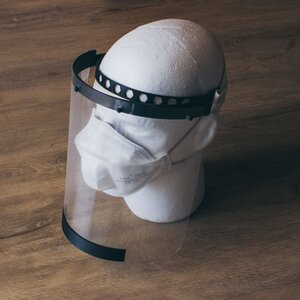Accept all cookies Accept only essential cookies See our Cookie Notice

About ESA
The European Space Agency (ESA) is Europe’s gateway to space. Its mission is to shape the development of Europe’s space capability and ensure that investment in space continues to deliver benefits to the citizens of Europe and the world.
Highlights
ESA - United space in Europe
This is ESA ESA facts Member States & Cooperating States Funding Director General Top management For Member State Delegations European vision European Space Policy ESA & EU Space Councils Responsibility & Sustainability Annual Report Calendar of meetings Corporate newsEstablishments & sites
ESA Headquarters ESA ESTEC ESA ESOC ESA ESRIN ESA EAC ESA ESAC Europe's Spaceport ESA ESEC ESA ECSAT Brussels Office Washington OfficeWorking with ESA
Business with ESA ESA Commercialisation Gateway Law at ESA Careers Cyber resilience at ESA IT at ESA Newsroom Partnerships Merchandising Licence Education Open Space Innovation Platform Integrity and Reporting Administrative Tribunal Health and SafetyMore about ESA
History ESA Historical Archives Exhibitions Publications Art & Culture ESA Merchandise Kids Diversity ESA Brand Centre ESA ChampionsLatest
Space in Member States
Find out more about space activities in our 23 Member States, and understand how ESA works together with their national agencies, institutions and organisations.
Science & Exploration
Exploring our Solar System and unlocking the secrets of the Universe
Go to topicAstronauts
Missions
Juice Euclid Webb Solar Orbiter BepiColombo Gaia ExoMars Cheops Exoplanet missions More missionsActivities
International Space Station Orion service module Gateway Concordia Caves & Pangaea BenefitsLatest
Space Safety
Protecting life and infrastructure on Earth and in orbit
Go to topicAsteroids
Asteroids and Planetary Defence Asteroid danger explained Flyeye telescope: asteroid detection Hera mission: asteroid deflection Near-Earth Object Coordination CentreSpace junk
About space debris Space debris by the numbers Space Environment Report In space refuelling, refurbishing and removingSafety from space
Clean Space ecodesign Zero Debris Technologies Space for Earth Supporting Sustainable DevelopmentLatest
Applications
Using space to benefit citizens and meet future challenges on Earth
Go to topicObserving the Earth
Observing the Earth Future EO Copernicus Meteorology Space for our climate Satellite missionsCommercialisation
ESA Commercialisation Gateway Open Space Innovation Platform Business Incubation ESA Space SolutionsLatest
Enabling & Support
Making space accessible and developing the technologies for the future
Go to topicBuilding missions
Space Engineering and Technology Test centre Laboratories Concurrent Design Facility Preparing for the future Shaping the Future Discovery and Preparation Advanced Concepts TeamSpace transportation
Space Transportation Ariane Vega Space Rider Future space transportation Boost! Europe's Spaceport Launches from Europe's Spaceport from 2012
MELT 3D printer
Thank you for liking
You have already liked this page, you can only like it once!
Europe’s first 3D printer designed for use in weightlessness, printing aerospace-quality plastics, has won the prestigious Aerospace Applications Award from design-to-manufacturing specialist TCT Magazine.
ESA’s Manufacturing of Experimental Layer Technology (MELT) project printer has to be able to operate from any orientation – up, down or sideways – in order to serve in microgravity conditions aboard the International Space Station. Based on the ‘fuse filament fabrication’ process, it has been designed to fit within a standard ISS payload rack, and to meet the Station’s rigorous safety standards.
The MELT printer can print a wide variety of thermoplastics from ABS (Acrylonitrile butadiene styrene), as used in Lego, up to high-melting point engineering thermoplastics such PEEK (Polyether ether ketone), which is robust enough to substitute for metal materials in some cases.
“This printer could be used to make parts on demand for the repair and maintenance of a long-duration orbital habitat,” explains ESA materials and processes engineer Ugo Lafont. “This printer would also benefit human bases on planetary surfaces. Crucially, it can also print using recycled plastics, allowing a whole new maintenance strategy based on closed-loop reuse of materials.”
The printer was produced for ESA by a consortium led by Sonaca Space GmbH together with BeeVeryCreative, Active Space Techologies SA and OHB-System AG.
The MELT project was supported through ESA’s Technology Development Element programme, which identifies promising technologies for space, then demonstrates their workability.
Watch a video of the printer in operation here.
-
CREDIT
ESA–G. Porter -
LICENCE
CC BY-SA 3.0 IGO or ESA Standard Licence
(content can be used under either licence)

3D printer at ESTEC Open Day

Metal 3D printer test print

3D printing in hard plastic

Face the virus















 Germany
Germany
 Austria
Austria
 Belgium
Belgium
 Denmark
Denmark
 Spain
Spain
 Estonia
Estonia
 Finland
Finland
 France
France
 Greece
Greece
 Hungary
Hungary
 Ireland
Ireland
 Italy
Italy
 Luxembourg
Luxembourg
 Norway
Norway
 The Netherlands
The Netherlands
 Poland
Poland
 Portugal
Portugal
 Czechia
Czechia
 Romania
Romania
 United Kingdom
United Kingdom
 Slovenia
Slovenia
 Sweden
Sweden
 Switzerland
Switzerland

























